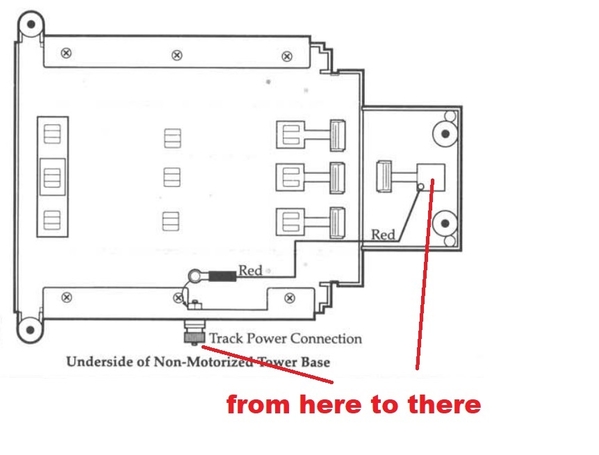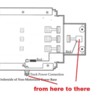The 213 lift bridge can be wired to remove power from the tracks at both ends when the bridge goes up. There is a terminal at one end of the bridge that supplies power to the lead track. Of course this track must be insulated from the main track power. I have two 213s. Some time ago I posted that the one bridge no longer supplied power when the bridge was down. The schematic showed a very short wire from the center rail of the bridge track to the terminal. This was physically under the tower. There is an undescribed little mark on one end of this 4" wire. I thought it may be a fuse; but a forum member assure me that it wasn't. I wasn't about to rip up the the track to get at the bottom of the bridge. I removed the insulating pin and issued a Form D for Main 2.
Now the 213 on Main 1 has the same problem. Thinking about it; recently there was a track alignment problem just before the bridge on Main 1. The derailments ended up on the bridge. I'm now thinking that there is a fuseable link on the wire between the center rail and the terminal that feeds the control track; and all those derailments blew it.






